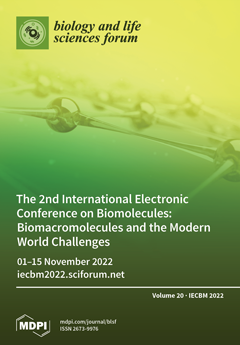The variety of spectral properties of visual pigments is provided mainly by the amino acid sequences of their protein component, the so-called visual opsins. However, such data on these proteins of gastropod mollusks are very scarce, and for terrestrial species are absent altogether.
[...] Read more.
The variety of spectral properties of visual pigments is provided mainly by the amino acid sequences of their protein component, the so-called visual opsins. However, such data on these proteins of gastropod mollusks are very scarce, and for terrestrial species are absent altogether. Meanwhile, the first sequenced genome of the terrestrial gastropod,
Achatina fulica, has been published. So, the aim of this study is the prediction of the amino acid sequences of opsins in the
A. fulica genome. To this purpose, all known mollusk opsin sequences from the NCBI (National Center for Biotechnology Information) Protein database were collected. To analyze them, we performed a multiple sequence alignment in Unipro UGENE software (version 39.0) (Unipro, Russia) by Clustal Omega and refined it by MUSCLE algorithm, both integrated in UGENE, and then constructed the HMM (Hidden Markov Models) profile, which was used to predict opsins in the
A. fulica genome. The prediction of opsin sequences was performed using HMMER software (version 3.3.2). To confirm that the obtained sequences belong to opsins, we searched for the following conserved domain: 7tmA_Opsin_Gq_invertebrates. As a result, we determined five rhodopsin G-coupled protein sequences in the
A. fulica genome: Afu011750, Afu004575, Afu005002, Afu003765, and Afu022267. This is the first attempt to annotate the
Achatina fulica genome, which was initiated by searching for opsins. Our study opens up new opportunities for further, more detailed evolutionary and genetic studies of mollusks, including the study of their visual mechanisms. However, it should be noted that opsins form a diverse multifunctional group of proteins, of which only some comprise visual pigments. Therefore, work towards the identification of visual opsins in
Achatina fulica should be continued.
Full article



